This Article has been revised, edited and added to, by Poulomi Chakraborty.
- The Digital Transformation of the Food and Beverage Sector
- Crafting a Compelling Digital Marketing Strategy
- Understanding the Target Audience
- Embracing Storytelling
- Leveraging User-Generated Content (UGC)
- Developing a Data-Driven Marketing Framework
- Innovating with Tech-Enhanced Customer Interactions
- Leveraging Content Diversity to Amplify Brand Voice
- Strategic Partnerships for Broader Reach
- Continuous Learning and Adaptation
- Key Digital Marketing Tactics for Food and Beverage Brands
- Analyzing and Adapting: The Role of Data
- Key Metrics to Monitor
- The Power of A/B Testing
- Staying Updated with Industry Trends
- Harnessing Predictive Analytics for Proactive Marketing
- Implementing Real-Time Data for Immediate Insights
- Enhancing Customer Segmentation with Artificial Intelligence
- Establishing Robust Feedback Loops
- Utilizing Data Visualization to Communicate Insights
- Essential Tools for Digital Marketing in the Food and Beverage Sector
- Social Media Management Platforms
- Email Marketing Solutions
- SEO and Analytics Tools
- Content Creation Software
- Expanding Reach with Programmatic Advertising Platforms
- Strengthening Engagement with Advanced CRM Systems
- Optimizing Content with AI-Driven Content Creation Tools
- Monitoring Performance with Next-Generation Analytics Tools
- Leveraging Integration Platforms to Streamline Operations
- Emerging Trends in Digital Marketing for Food and Beverage
- Augmented Reality (AR) Experiences
- Sustainability and Transparency
- Personalization through AI
- Capitalizing on the Internet of Things (IoT)
- Exploring the Potential of 5G Technology
- Harnessing the Power of Blockchain for Enhanced Customer Trust
- Incorporating Neuro-Marketing Techniques for Deeper Engagement
- Advancing Sustainability Through Digital Channels
- Conclusion
The food and beverage sector is a dynamic and ever-evolving industry. With the rise of social media and the digital era, it’s no surprise that digital marketing has become a fundamental tool for brands in this industry. Engaging with foodies worldwide requires a unique blend of creativity, strategy, and understanding of the latest trends. This article delves deep into the nuances of digital marketing in the food and beverage sector, offering a comprehensive guide for brands seeking to connect with their audience effectively.
The Digital Transformation of the Food and Beverage Sector

Evolution of Consumer Behavior
Consumers today are not just buying food; they’re buying experiences. The modern-day foodie is informed, curious, and eager to share their culinary adventures with the world. With the proliferation of smartphones and high-speed internet, customers now have a world of information and reviews at their fingertips.
Key Changes in Consumer Behavior:
- Increased Reliance on Online Reviews: Before trying a new restaurant or buying a new product, consumers often check online reviews. Websites like Yelp, TripAdvisor, and Google Reviews play a significant role in shaping consumer decisions.
- Adoption of Food Apps: Food delivery apps like UberEats, Grubhub, and DoorDash have changed the way we consume food, allowing for a plethora of options delivered right to our doorsteps.
- Preference for Visual Content: Platforms like Instagram and Pinterest are centered around visual content. Beautifully plated dishes, refreshing beverages, and behind-the-scenes looks into kitchens have become standard content.
Digital Channels Transforming the Industry
The rise of various digital channels has provided brands in the food and beverage sector with multiple avenues to engage with their audience.
- Social Media: Platforms like Instagram, Facebook, and TikTok have become central to food and beverage marketing. They offer brands a space to showcase their products, tell their stories, and engage with customers directly.
- Blogs and Websites: Brands use blogs and websites to share recipes, tell stories, and offer a more in-depth look at their products and values.
- Email Marketing: Despite being one of the older digital marketing channels, email remains a powerful tool. Brands use it for personalized offers, newsletters, and to nurture customer relationships.
The Integration of Digital Technology in Product Development
The digital transformation goes beyond marketing and customer engagement, deeply influencing product development within the food and beverage industry. For startup founders, leveraging technology to innovate products can be a game-changer.
For instance, startups can harness AI-driven trend prediction tools to forecast upcoming flavor trends and dietary preferences, allowing them to stay ahead of market demands with timely product launches.
Enhancing Supply Chain Transparency
In today’s market, consumers demand transparency about the products they consume. Startups in the food and beverage sector can differentiate themselves by using digital tools to enhance supply chain transparency.
Blockchain technology, for example, offers an immutable record of every transaction and movement of goods from the source to the consumer. By adopting blockchain, startups can provide a transparent, verifiable history of their products’ journey, thus building trust and reinforcing the brand’s commitment to quality and transparency.
Optimizing Customer Experience through Technology
Optimizing customer experience is paramount in the digital age, where consumer loyalty is often fleeting. Startups can employ advanced CRM (Customer Relationship Management) systems to manage customer interactions and data throughout the customer lifecycle, improving business relationships, retention, and sales growth.
Integrating AI with these systems can provide deeper insights into customer behaviors and preferences, enabling personalized engagement strategies such as customized promotions and product recommendations.
Additionally, leveraging augmented reality (AR) to enhance online shopping experiences can allow customers to see how a product might appear in real life, further bridging the gap between digital and physical shopping experiences.
Implementing Dynamic Pricing Strategies
Dynamic pricing is a strategy increasingly used by food and beverage companies to adjust prices in real-time based on market demands, competitor prices, and inventory levels. For startups, implementing such strategies can maximize revenue and improve competitiveness.
Digital tools and AI can analyze multiple variables in real time to adjust prices dynamically, ensuring optimal pricing that attracts customers while maximizing profit margins. This approach not only caters to the economic aspect of sales but also responds flexibly to consumer purchasing patterns and market changes.
Cultivating a Digital-first Culture
For food and beverage startups, cultivating a digital-first culture is crucial. This involves not only adopting new technologies but also fostering a mindset among team members that embraces continuous learning and agile response to digital trends.
Encouraging a culture of innovation can help startups adapt swiftly to new marketing techniques and consumer engagement strategies, keeping the brand relevant and forward-thinking in a competitive market.
By strategically integrating these digital transformations, food and beverage startups can enhance their product offerings, streamline operations, and provide exceptional customer experiences, setting a foundation for sustained growth and success in a digital-centric marketplace.
Crafting a Compelling Digital Marketing Strategy
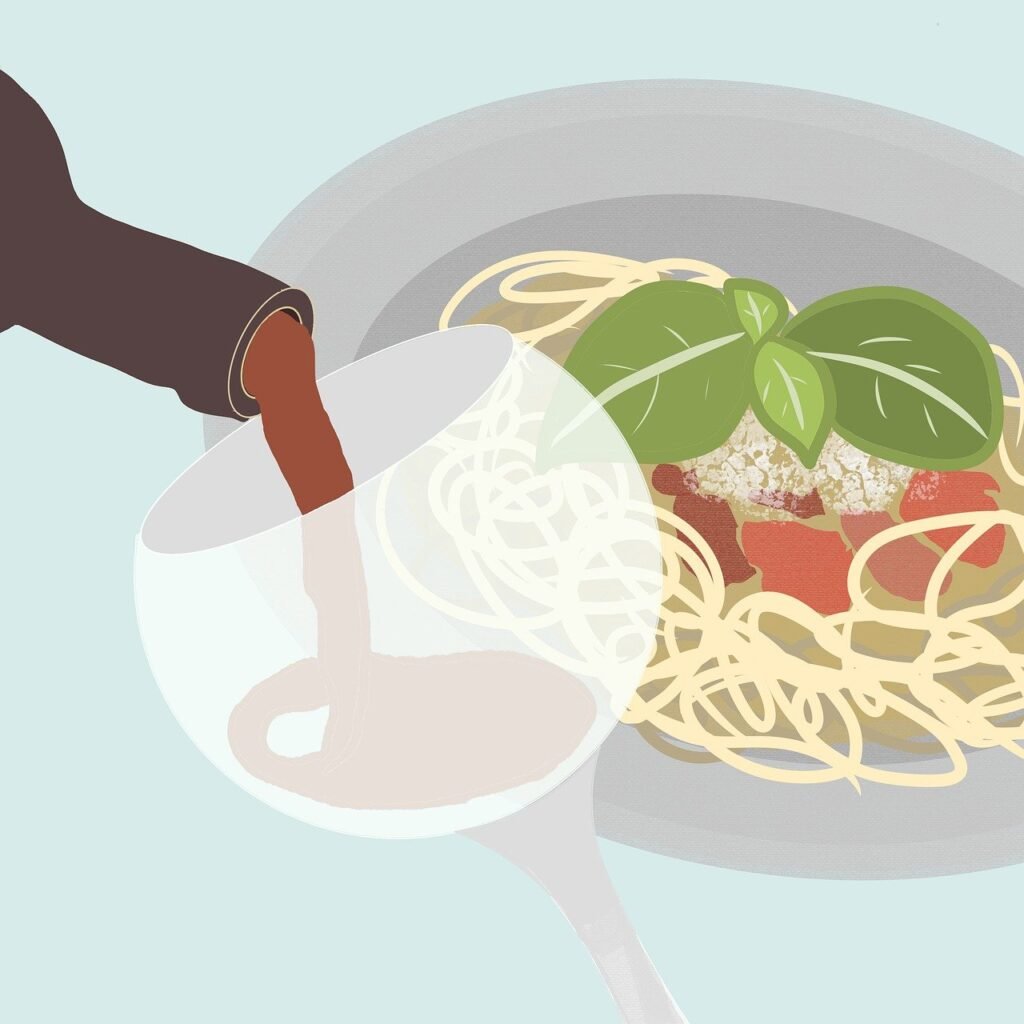
Understanding the Target Audience
Before diving into the tactical aspects of digital marketing, it’s crucial to understand who you’re speaking to. This involves:
- Segmentation: Break down your audience into smaller groups based on demographics, behaviors, or interests.
- Personas: Create fictional, generalized representations of your ideal customers. This helps tailor your messaging and content to resonate with them.
- Journey Mapping: Understand the path a consumer takes from becoming aware of your brand to making a purchase and beyond.
Embracing Storytelling
The food and beverage sector is ripe for storytelling. Whether it’s the journey of a coffee bean from a remote village to a cup or the history of a century-old family recipe, stories resonate.
- Brand Origin: Share the history of your brand. Was it started by a grandmother in her kitchen? Did it emerge from a need to address a particular dietary concern?
- Behind-the-Scenes: Show the care, craftsmanship, and passion that go into making your products.
- Customer Stories: Showcase testimonials or stories from customers who have a unique connection to your brand.
Leveraging User-Generated Content (UGC)
- Encourage Check-ins and Reviews: Offer incentives for customers to check-in at your location or leave a review online.
- Create Branded Hashtags: This makes it easier for you to find UGC on platforms like Instagram and also creates a community feel around your brand.
- Feature UGC on Your Platforms: Reposting customer content (with permission) on your official channels can boost engagement and foster trust.
Developing a Data-Driven Marketing Framework
For startup founders in the food and beverage industry, constructing a data-driven marketing strategy is essential to understand and predict consumer behavior more accurately.
By integrating data analytics into your marketing efforts, you can identify which products are performing well, which promotions are resonating, and where there are opportunities for growth.
Advanced analytics platforms can segment consumer data into more nuanced groups than traditional demographics, such as behavioral and psychographic segmentation, providing a more comprehensive understanding of your audience. This strategic approach allows for highly targeted marketing campaigns that can significantly increase ROI.
Innovating with Tech-Enhanced Customer Interactions
Embracing technology to facilitate innovative customer interactions can set a startup apart in a crowded market. For instance, incorporating chatbots equipped with natural language processing can offer real-time customer service and personalized shopping advice, mirroring in-store experiences.
Furthermore, virtual reality (VR) can be used to create immersive brand experiences, such as virtual tours of manufacturing processes or tasting sessions, which can enhance customer engagement and loyalty.
Leveraging Content Diversity to Amplify Brand Voice
Creating a diverse content strategy that extends beyond visual content and traditional blogs can significantly enhance digital marketing efforts. Podcasts, webinars, and live interactive sessions offer platforms for deeper storytelling and customer engagement.
For example, hosting a webinar on the health benefits of your products or a podcast series featuring discussions with chefs and nutrition experts can provide valuable content that also educates your audience. These formats not only diversify the types of content offered but also help in establishing your brand as a thought leader in the industry.
Strategic Partnerships for Broader Reach
Forming strategic partnerships with other brands, influencers, and content creators can amplify your marketing reach and lend credibility to your startup. Partnering with local food influencers or chefs who share your brand’s values can lead to collaborative content that is authentic and appealing to the audience.
Additionally, collaborations with technology companies can enable you to leverage newer platforms and innovations, making your campaigns more effective and wide-reaching.
Continuous Learning and Adaptation
In a fast-evolving industry, continuous learning and adaptation are key to staying relevant and competitive. Encouraging a culture where feedback is actively sought and valued from all stakeholders—including customers, employees, and partners—can lead to insights that drive better marketing decisions.
Regularly attending industry workshops, subscribing to relevant marketing and tech publications, and participating in webinars can also keep you updated with the latest trends and best practices in digital marketing.
By implementing these strategies, food and beverage startups can craft compelling digital marketing strategies that not only attract but also retain customers, ultimately driving growth and building a strong, adaptable brand.
Key Digital Marketing Tactics for Food and Beverage Brands

Social Media Marketing
With its emphasis on visuals and direct engagement, social media is a natural fit for the food and beverage sector.
- High-Quality Imagery: Invest in good photography. The appeal of food and beverages is largely visual.
- Engage Regularly: Respond to comments, share user content, and ask questions to foster community.
- Utilize Stories and Live Streams: Platforms like Instagram and Facebook allow for stories and live broadcasts. Use these for announcements, behind-the-scenes looks, or Q&A sessions.
Influencer Collaborations
Collaborating with influencers can provide a significant boost to your brand‘s visibility, especially if you’re targeting younger audiences.
- Choose the Right Fit: It’s not just about follower count. Ensure the influencer’s audience aligns with your target demographic and brand values.
- Collaborative Content: Work with influencers to create unique recipes, reviews, or other content that showcases your product in a fresh light.
- Maintain Authenticity: The most successful influencer partnerships feel genuine. Avoid overly scripted or hard-sell approaches.
SEO and Content Marketing
While visuals dominate the food and beverage sector, written content shouldn’t be neglected.
- Optimize Your Website: Ensure that your site is mobile-friendly, loads quickly, and is optimized for search engines.
- Create Value-Driven Content: Share recipes, tips, and industry insights to position your brand as an authority.
- Local SEO: For restaurants and local food brands, local SEO can drive foot traffic. Ensure your business is listed on local directories and encourage reviews.
Maximizing Engagement Through Interactive Content
In the realm of digital marketing, interactive content stands out as a powerful tool to engage audiences more deeply and memorably. For food and beverage startups, utilizing formats such as interactive quizzes, polls, and contests on social media platforms can encourage active participation and foster a sense of community among followers.
This type of content not only entertains but also provides valuable insights into consumer preferences and behaviors, enabling brands to tailor their offerings more effectively. Hosting live cooking sessions or mixology classes can engage viewers and inspire them to try your products while they follow along at home.
Focusing on Mobile-First Strategies
Given the ubiquitous use of smartphones, adopting a mobile-first approach in your digital marketing strategy is crucial. This involves designing marketing campaigns with the mobile user in mind from the outset, ensuring that websites, emails, and content are optimized for mobile devices.
For example, incorporating easy-to-navigate design interfaces, fast-loading pages, and mobile-friendly formats can significantly enhance user engagement and conversion rates. A mobile-first approach ensures that the user’s experience is seamless, whether they are exploring a new product, reading a blog post, or viewing a campaign on their device.
Integrating Voice Search Optimization
As voice-activated devices become more prevalent, optimizing for voice search is becoming essential. This can involve tailoring your SEO strategy to include more conversational keywords and phrases that potential customers might use when speaking rather than typing.
For startups in the food and beverage sector, this could mean incorporating phrases like “what’s the best vegan protein bar near me” or “how to make a mojito at home.” Optimizing for voice search helps ensure that your brand remains accessible and top-of-mind as the use of voice assistants continues to grow.
Creating Synergy Between Online and Offline Campaigns
While online campaigns are pivotal, integrating these with offline efforts can amplify overall marketing impact. For example, QR codes can be used on product packaging or print ads to link directly to online content, such as promotional videos, recipe ideas, or a contest entry page.
This strategy not only drives online traffic but also creates a cohesive user experience that bridges the gap between physical products and digital interactions. Additionally, hosting pop-up events or participating in food festivals while promoting these activities online can increase brand visibility and engagement across multiple channels.
Utilizing Data Analytics for Campaign Refinement
In digital marketing, the ability to measure and analyze the effectiveness of campaigns is invaluable. Employing robust analytics tools allows you to track user engagement, conversion rates, and overall campaign performance in real time.
This data can be used to refine and adjust your strategies promptly, enhancing the effectiveness of your marketing efforts. For instance, A/B testing different versions of a campaign on social media can reveal which elements resonate most with your audience, allowing for more targeted and successful future campaigns.
By focusing on these advanced tactics, startups in the food and beverage industry can create more effective, dynamic, and responsive digital marketing strategies that capture and hold consumer attention in a competitive marketplace.
Analyzing and Adapting: The Role of Data
Digital marketing is not a set-it-and-forget-it endeavor. For maximum effectiveness, brands should continually analyze their efforts and adapt accordingly.
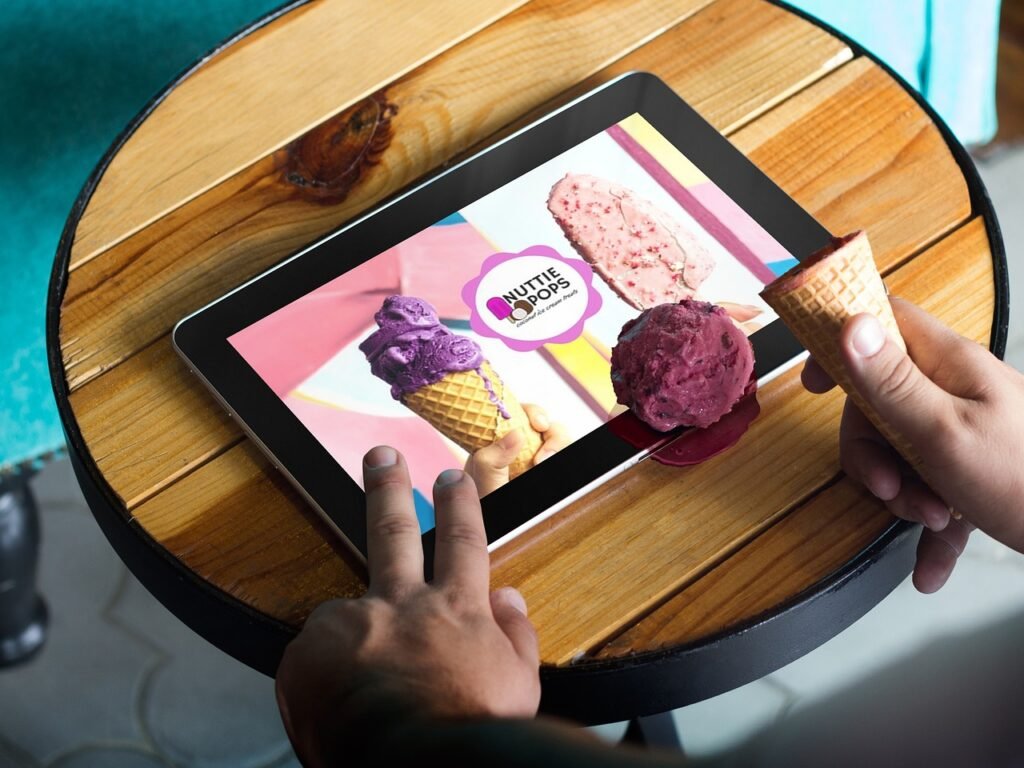
Key Metrics to Monitor
- Engagement Rates: This includes likes, shares, comments, and overall interaction with your content.
- Conversion Rates: Track how many of your digital interactions lead to desired actions, such as a purchase or a newsletter signup.
- Customer Feedback: This isn’t just in terms of reviews. Monitor direct messages, comments, and other feedback channels for insights.
The Power of A/B Testing
A/B testing involves creating two versions of a piece of content to see which one performs better. This can be applied to email campaigns, website layouts, ad copy, and more. Regular testing can provide insights into what resonates most with your audience.
Staying Updated with Industry Trends
The digital landscape is continually evolving. Brands that stay updated with the latest trends, algorithm changes, and platform features will have a competitive edge.
Harnessing Predictive Analytics for Proactive Marketing
In the rapidly evolving food and beverage sector, leveraging predictive analytics can empower startups to anticipate market trends and consumer behavior. By analyzing historical data and identifying patterns, predictive models can forecast future buying patterns and preferences, allowing brands to adjust their strategies proactively.
For example, if data suggests a growing trend in health-conscious dining in the coming months, a company could increase marketing focus on their health-oriented products early, gaining a first-mover advantage in the marketplace.
Implementing Real-Time Data for Immediate Insights
The use of real-time data analytics transforms the way brands can interact with current market dynamics. This involves monitoring digital marketing campaigns and consumer interactions as they happen, allowing for immediate adjustments to enhance performance.
If a particular promotional campaign is not performing as expected, real-time metrics can help pinpoint issues, whether they’re related to audience targeting, content appeal, or timing, enabling marketers to make quick corrections that optimize outcomes.
Enhancing Customer Segmentation with Artificial Intelligence
Artificial intelligence (AI) plays a crucial role in refining customer segmentation by processing large datasets more efficiently and with greater complexity than traditional methods.
AI can identify subtle patterns and correlations that human analysts might miss, segmenting customers not only by demographic data but also by behavior, purchasing patterns, and personal preferences.
This deeper segmentation allows for highly personalized marketing strategies that can significantly improve engagement rates and conversion. For instance, AI-driven insights could inform a campaign that targets users who prefer organic products with content focused on sustainability and health benefits, which would resonate more with their values and interests.
Establishing Robust Feedback Loops
For any digital marketing strategy, establishing robust feedback loops is essential. This means not only collecting data from digital interactions but also actively seeking customer feedback through surveys, polls, and direct communications.
Integrating this feedback into your marketing strategy ensures that your brand remains responsive and adaptable to consumer needs and preferences. Moreover, these feedback loops can help identify new opportunities for product development or enhancement, fostering a culture of continuous improvement.
Utilizing Data Visualization to Communicate Insights
Data visualization tools can dramatically improve the way teams understand and act on data. By presenting complex analytics in graphical formats—such as heat maps, graphs, and interactive dashboards—these tools help marketers and company decision-makers visualize patterns and trends that might otherwise go unnoticed.
Effective data visualization not only aids in internal communications but also helps in presenting data-driven stories to stakeholders or investors, showcasing the company’s insights-driven approach and strategic direction.
Incorporating these advanced data analysis techniques will enable food and beverage startups to not only adapt to current market conditions but also anticipate future challenges and opportunities, placing them at a competitive advantage in a data-driven world.

Related: Check out our free SEO suite

Essential Tools for Digital Marketing in the Food and Beverage Sector
Social Media Management Platforms
Managing multiple social media accounts can be overwhelming. Fortunately, there are tools that can streamline this process:
- Hootsuite and Buffer: These platforms allow you to schedule posts, track social media engagement, and get an overview of your social media performance across various channels.
- Later: Specifically designed for Instagram, Later helps you visually plan and schedule your Instagram posts.
Email Marketing Solutions
Despite the rise of newer marketing channels, email remains a potent tool, especially for personalized communication.
- Mailchimp and Constant Contact: Both are user-friendly platforms perfect for designing newsletters, setting up automated campaigns, and segmenting your audience based on behavior.
- SendinBlue: Beyond email campaigns, it also offers SMS campaigns, a handy feature for localized promotions or time-sensitive deals.
SEO and Analytics Tools
Search engine optimization (SEO) can’t be ignored, especially for brands looking to drive organic traffic to their sites.
- SEMrush and Ahrefs: Comprehensive tools for keyword research, tracking backlink profiles, and analyzing competitors’ strategies.
- Google Analytics: An indispensable tool for understanding website traffic, user behavior, and conversion paths.
Content Creation Software
In the visually-driven food and beverage industry, content is king.
- Adobe Creative Suite: Offers tools like Photoshop and Lightroom for photo editing, and Premiere Pro for video editing.
- Canva: A user-friendly graphic design tool perfect for creating social media graphics, infographics, and more.
- Unfold: A storytelling tool for Instagram, helping brands create engaging and aesthetically pleasing stories.
Expanding Reach with Programmatic Advertising Platforms
In today’s digital marketing landscape, programmatic advertising stands out as a crucial tool for efficiently reaching a broad and targeted audience. This technology automates the decision-making process of media buying by targeting specific audiences and demographics using AI and real-time bidding.
For food and beverage startups, utilizing programmatic advertising can drastically increase the precision and reduce the cost of ad campaigns. By leveraging platforms like Google Ads or MediaMath, startups can place ads that are dynamically optimized for performance across multiple channels, ensuring that they reach the right audience at the optimal time with the right message.
Strengthening Engagement with Advanced CRM Systems

These systems can track customer interactions across all digital platforms, including social media, email, and your company’s website, allowing for a unified view of customer behavior and preferences.
Using an advanced CRM like Salesforce or HubSpot, which integrates seamlessly with various marketing platforms, can help startups streamline their operations and personalize their marketing efforts, leading to increased customer loyalty and sales.
Optimizing Content with AI-Driven Content Creation Tools
Artificial intelligence is revolutionizing content creation by helping brands produce more relevant and personalized content at scale. AI-powered tools such as Copy.ai or Jasper can assist in generating engaging and optimized text for blogs, social media posts, and advertising copy.
These tools analyze existing content and data trends to suggest content themes and styles that are most likely to resonate with your audience. Employing these tools can save time and resources, enabling marketers to focus on strategy and creative direction while maintaining a consistent voice across all channels.
Monitoring Performance with Next-Generation Analytics Tools
While traditional analytics tools provide a wealth of data, next-generation analytics platforms offer deeper insights and predictive capabilities that can transform a startup’s marketing strategy.
Tools like Mixpanel and Amplitude offer behavioral analytics that go beyond mere page views and click rates to analyze how users interact with your online platforms, providing insights into the customer journey and identifying potential drop-off points.
This level of detail helps marketers fine-tune their strategies in real-time and develop more effective customer engagement tactics.
Leveraging Integration Platforms to Streamline Operations
As digital marketing tools proliferate, managing all of them can become overwhelming. Integration platforms like Zapier or Integromat can connect different marketing tools and automate workflows, ensuring that data flows seamlessly between platforms.
This connectivity not only saves time but also enhances data accuracy and provides a holistic view of marketing efforts. For startups, this means more efficient operations and the ability to make quicker, data-informed decisions to drive growth.
By adopting these advanced tools, food and beverage startups can not only enhance their digital marketing efforts but also gain a competitive edge by being more responsive, efficient, and data-driven in their approach.
Emerging Trends in Digital Marketing for Food and Beverage

Augmented Reality (AR) Experiences
AR is making its way into the food and beverage sector, offering unique digital experiences.
- Virtual Menus: Restaurants use AR apps to let diners preview dishes in 3D before ordering.
- Interactive Packaging: Beverage and food brands can use AR to provide additional content or experiences when users scan their packaging with a smartphone.
Sustainability and Transparency
Modern consumers value transparency and sustainability. Digital marketing can aid in highlighting these aspects:
- Traceability Platforms: Apps and platforms that allow consumers to trace the origin of their food, understanding the supply chain.
- Sustainability Reports: Brands are increasingly sharing sustainability reports online, highlighting efforts in areas like waste reduction, ethical sourcing, and carbon footprint reduction.
Personalization through AI
Artificial Intelligence (AI) allows for unprecedented levels of personalization in marketing:
- Chatbots for Customer Service: Chatbots can answer customer queries in real-time, recommend dishes or products, and even process orders.
- Personalized Recommendations: Based on browsing and purchase history, AI can suggest products or dishes that a customer might enjoy.
Capitalizing on the Internet of Things (IoT)
The integration of the Internet of Things (IoT) into digital marketing offers food and beverage startups an innovative way to enhance customer experiences and gather valuable data. IoT technology can be embedded in kitchen appliances, packaging, and even dining areas to collect data on usage patterns and preferences.
For instance, smart packaging could provide customers with information about the freshness of food or suggest recipes based on the contents. By utilizing IoT, startups can offer personalized experiences and improve their products based on real-time feedback from their customers.
Exploring the Potential of 5G Technology
The rollout of 5G technology promises to revolutionize the way brands interact with consumers by enabling faster and more reliable internet connections. This advancement opens up new possibilities for immersive marketing experiences, such as high-definition food and beverage tutorials or real-time cooking classes without any lag.
Startups can leverage 5G to create innovative marketing campaigns that were not possible before, due to bandwidth limitations, enhancing customer engagement and setting new standards in digital interactivity.
Harnessing the Power of Blockchain for Enhanced Customer Trust
Blockchain technology is becoming increasingly relevant in the food and beverage industry, particularly as consumers demand more transparency regarding the sourcing and authenticity of the products they consume. By implementing blockchain, startups can provide a tamper-proof ledger of their supply chain, from farm to table.
This transparency not only builds trust but also enhances brand reputation, as customers appreciate the commitment to quality and ethical practices. Additionally, blockchain can be used in loyalty programs, securing customer rewards and personal data safely and transparently.
Incorporating Neuro-Marketing Techniques for Deeper Engagement
Neuro-marketing, the application of neuroscience to marketing, offers insights into consumer decision-making processes that traditional methods cannot provide. Startups can use neuro-marketing techniques such as eye-tracking and brain imaging to understand how consumers react to their advertisements, packaging, or digital content.
This data can inform more effective marketing strategies that truly resonate with target audiences, potentially increasing conversion rates and customer loyalty by appealing directly to the underlying drivers of consumer behavior.
Advancing Sustainability Through Digital Channels
As sustainability becomes a significant concern for consumers, food and beverage startups have an opportunity to use their digital marketing platforms to highlight their sustainability efforts.
By creating content that showcases their commitment to reducing waste, using eco-friendly packaging, or supporting local suppliers, startups can align themselves with consumer values and differentiate their brand.
Digital tools can also promote transparency in these efforts, offering traceability and proof of impact, which reinforces consumer trust and enhances brand loyalty.
By embracing these emerging trends, food and beverage startups can not only stay ahead of the curve but also forge deeper connections with their customers, leveraging technology to deliver value and innovation in exciting new ways.
Conclusion
As the food and beverage sector continues to evolve under the influence of digital transformation, startups in this space must embrace and adapt to a range of innovative marketing strategies to remain competitive. By integrating advanced technologies like AI, IoT, and blockchain, brands can enhance transparency, customer engagement, and operational efficiency.
The key to success lies in understanding and implementing these digital tools to forge deeper connections with consumers, anticipate market trends, and deliver personalized experiences. Additionally, keeping abreast of emerging trends such as 5G, neuro-marketing, and sustainability can help startups differentiate themselves and align with consumer values.
In this dynamic landscape, the brands that will thrive are those that leverage digital marketing not just as a tool for sales, but as a comprehensive strategy to build trust, community, and a lasting relationship with their audience. As we look to the future, the integration of these digital strategies will continue to redefine the boundaries of marketing in the food and beverage industry, promising exciting opportunities for growth and innovation.
Read Next
- Keyword Research for Startup Email Marketing: Boosting Open Rates
- SEO Keyword Research Checklist for Startups
- User-Generated Content: Leveraging Customer Keywords for Startups
- Using Keywords in Meta Tags for Startup SEO Boost
- Keyword Research for Startup Infographics: Visual Content Strategies

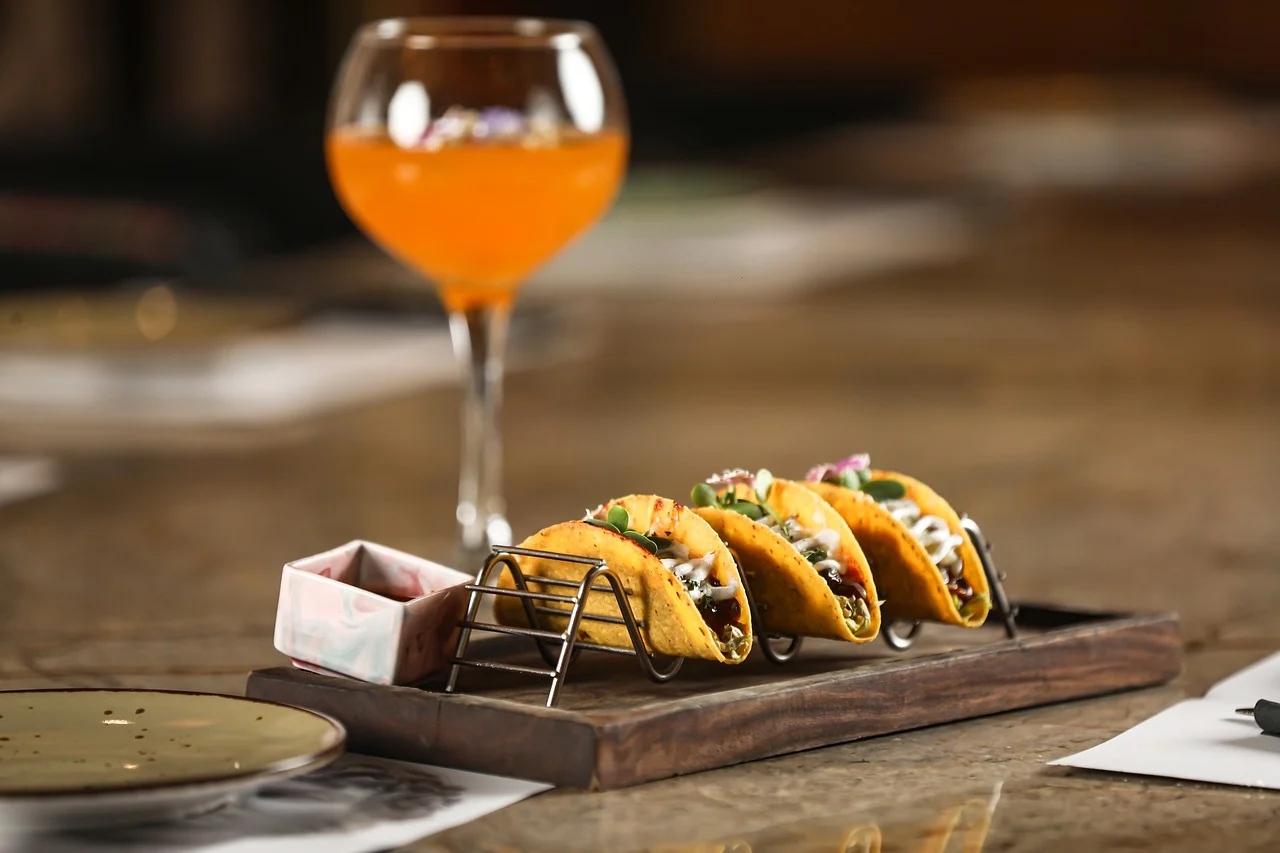





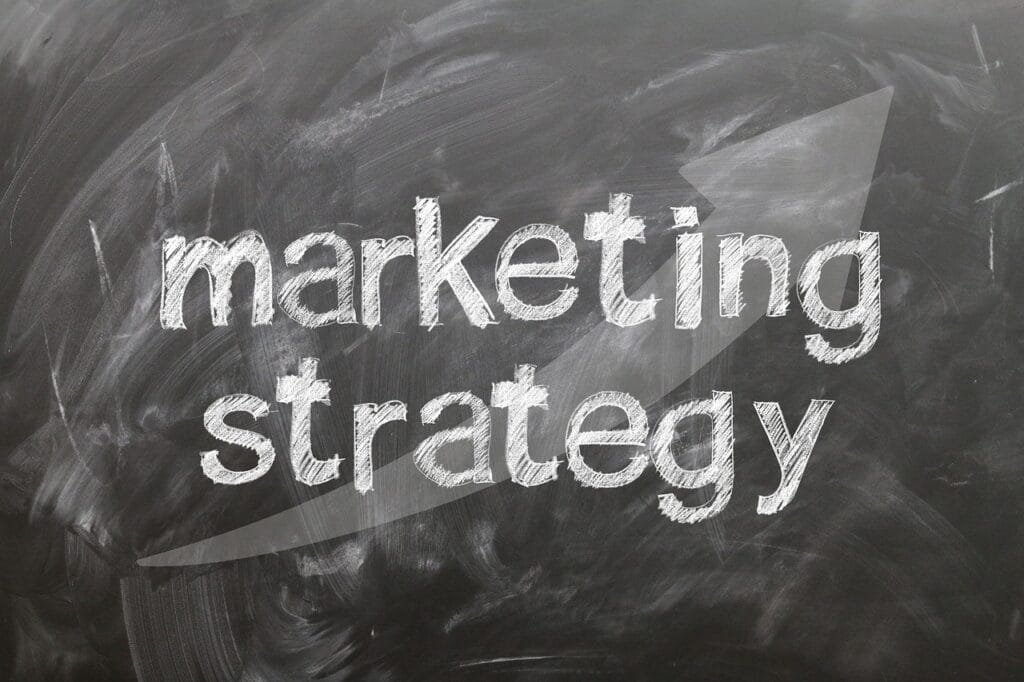

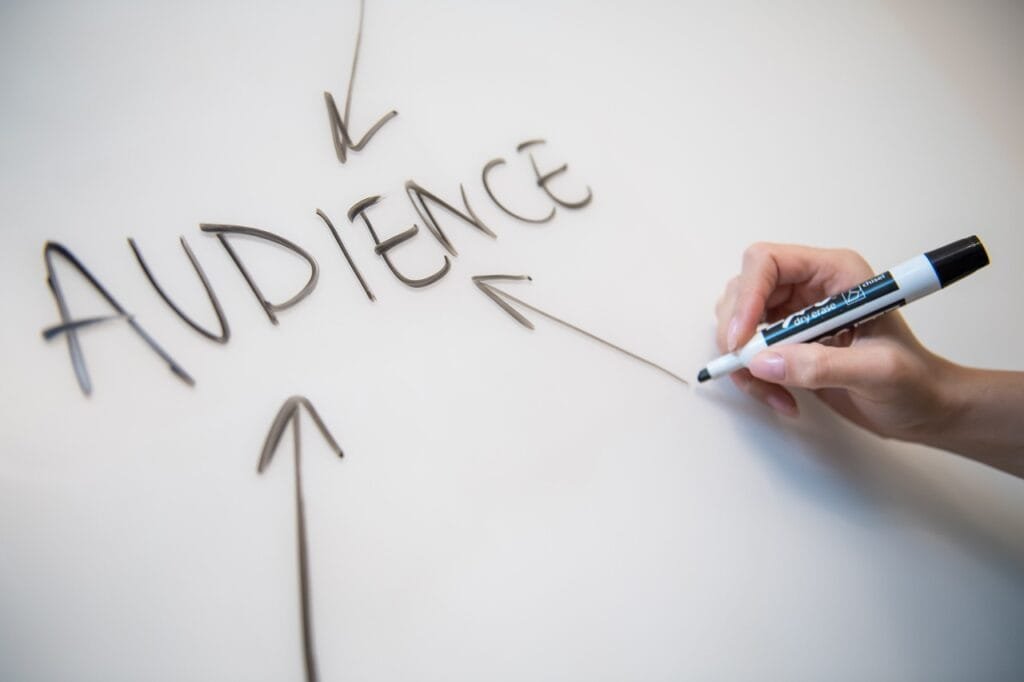





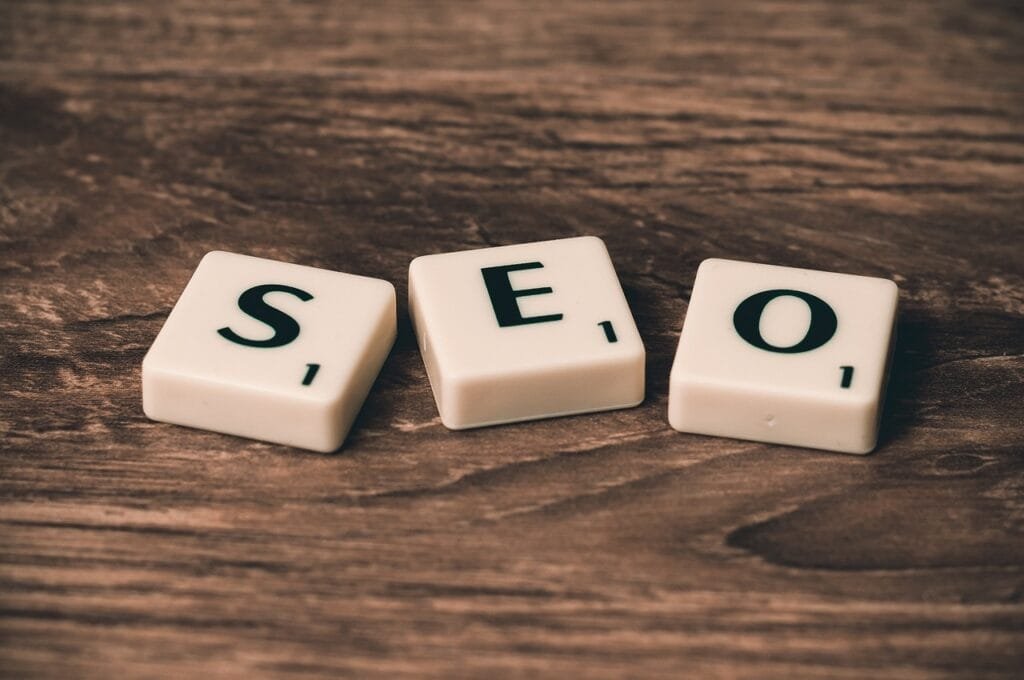

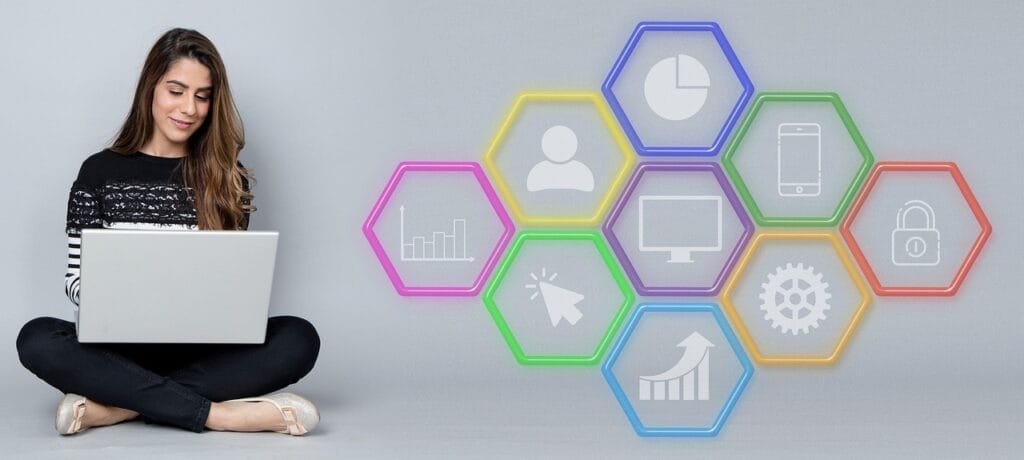




Comments are closed.